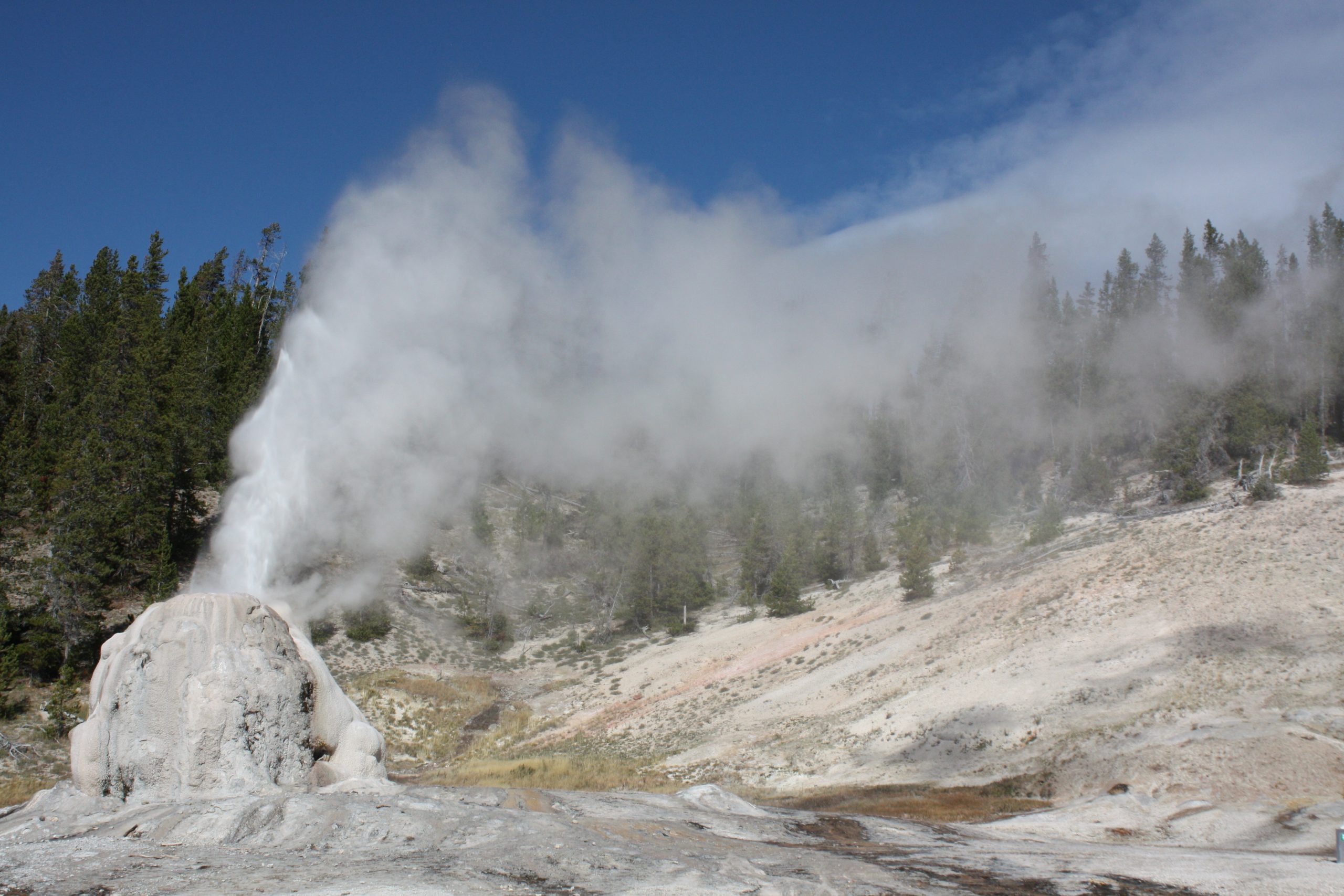Just off the beaten path on the south side of Yellowstone National Park, there is a hidden gem called Lone Star Geyser. While most visitors flock to Old Faithful and Upper Geyser Basin, tucked away in the thick forest, is a geyser that erupts with just as much regularity and pizazz as its more famous cousin. Lone Star Geyser just takes a little more work to reach.
What Makes Geysers Tick?
The word “geyser” comes from an Icelandic word meaning “to gush,” which is exactly what they do. Nothing quite compares to the experience of watching a massive amount of water gush from the ground. But how does this phenomenon occur?
It starts with a good rain or snow storm. The water soaks into the ground and makes its way deeper into the crust of the earth through the layers of porous rock. This water can travel down as deep as 10,000 feet! This is such a distance that sometimes it takes the same rainwater 500 years to return to the surface.
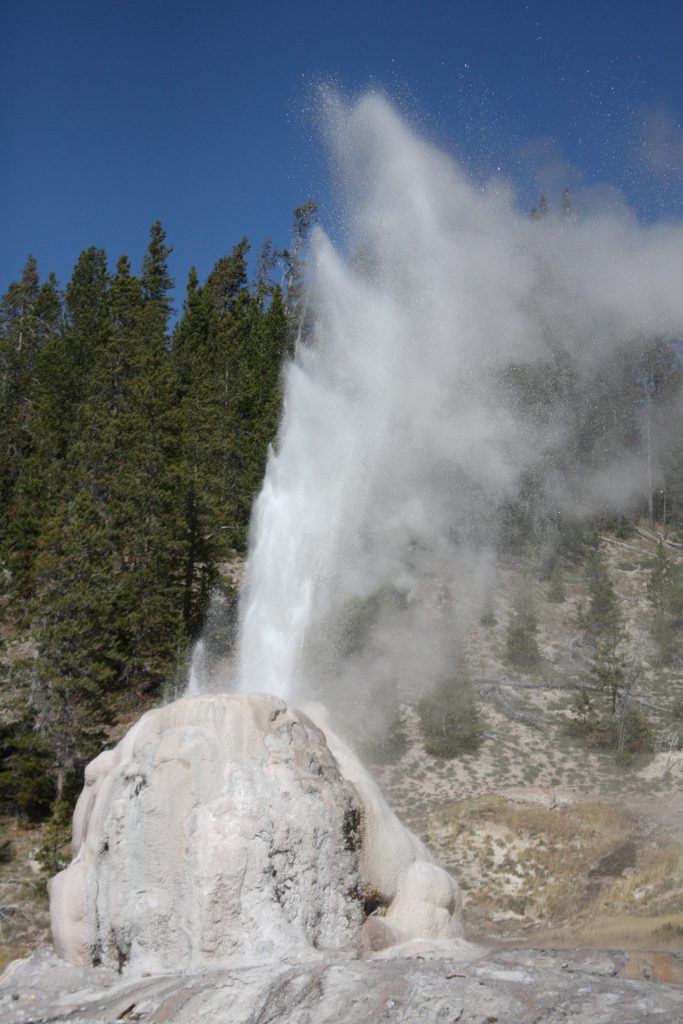
When the water reaches those depths, it comes in contact with the heat from the Yellowstone volcano’s magma chamber. The water heats to up to 700 degrees Fahrenheit, but the pressure at those depths prevents it from boiling away. Instead, the heated water becomes less dense and pushes upward through the cracks in the rock.
The rocks that this water pushes through in Yellowstone contains significant amounts of rhyolite. A key feature of rhyolite is that it contains a ton of silica— a key ingredient in making glass. As the water dissolves the silica from the rhyolite around it, it creates a glass-coated piping system. This coating keeps the pressure and water sealed safely inside of it.
As cracks in the ground become narrower, the pressure that is pushing the water upward increases, similar to how water reacts when you cover the opening of a garden hose. As the water reaches the surface of the Earth’s crust, the sudden reduction in pressure causes the water to boil. Combine that with the constriction in the pipe system and the water gets forced up and out of the ground in a magnificent spray of water at geysers like Lone Star.
The Hike to Lone Star Geyser
The trailhead for Lone Star Geyser is about 3.5 miles east of the Old Faithful Visitor Center on Yellowstone’s Grand Loop Road. The Firehole River winds along the road here, tumbling into the gorge in a stunning waterfall called Kepler Cascades.
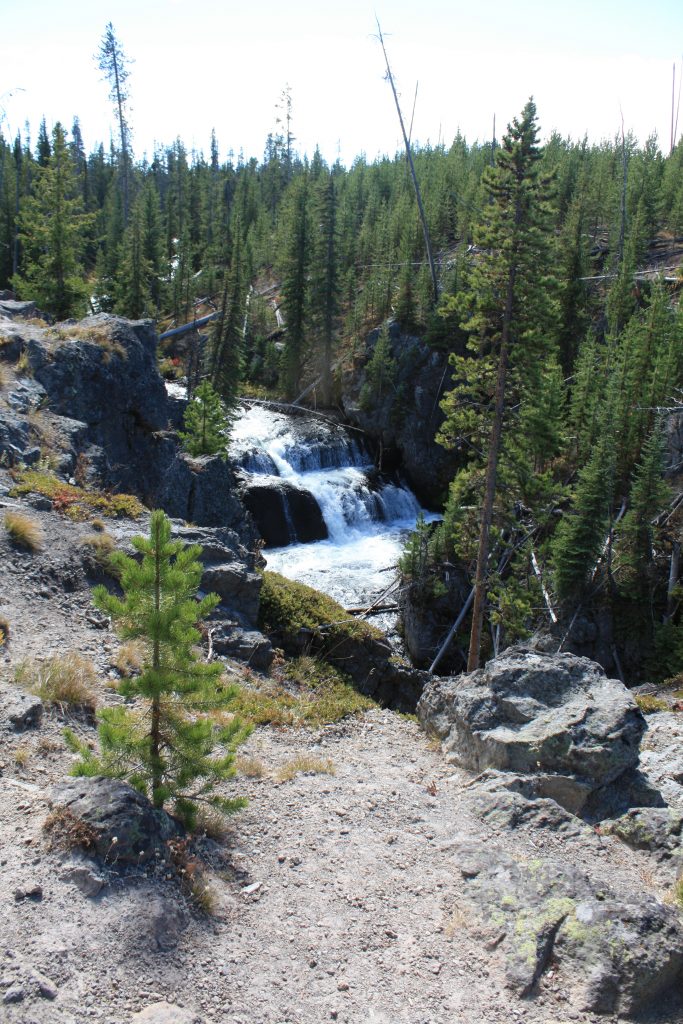
The Lone Star Geyser trail is fairly popular, and the trailhead parking lot fills up quickly after mid-morning. We started our hike at eight o’clock in the morning and saw very few hikers on the trail at the early hour. This hike can be a great escape from some of the busier tourist spots in the park, which lends to some peace and quiet with the volcano, nature, and wildlife sightings.
The trail to the geyser is an easy 5 mile round trip hike on an old forest service road. The trail itself is fairly level, with only 100 feet of elevation gain over the 2.5 mile trek. This allows for bikers to use the trail (except for the last stretch to the geyser) and cross country skiiers to use it in the winter.
The trail follows the Firehole Creek, winding through thick forest most of the way. In the fall, the foliage colors can be brilliant. Keep an eye out for wildlife in the brush. Mosquitos and horse flies can be pesky on the trail, so bring some insect repellent.
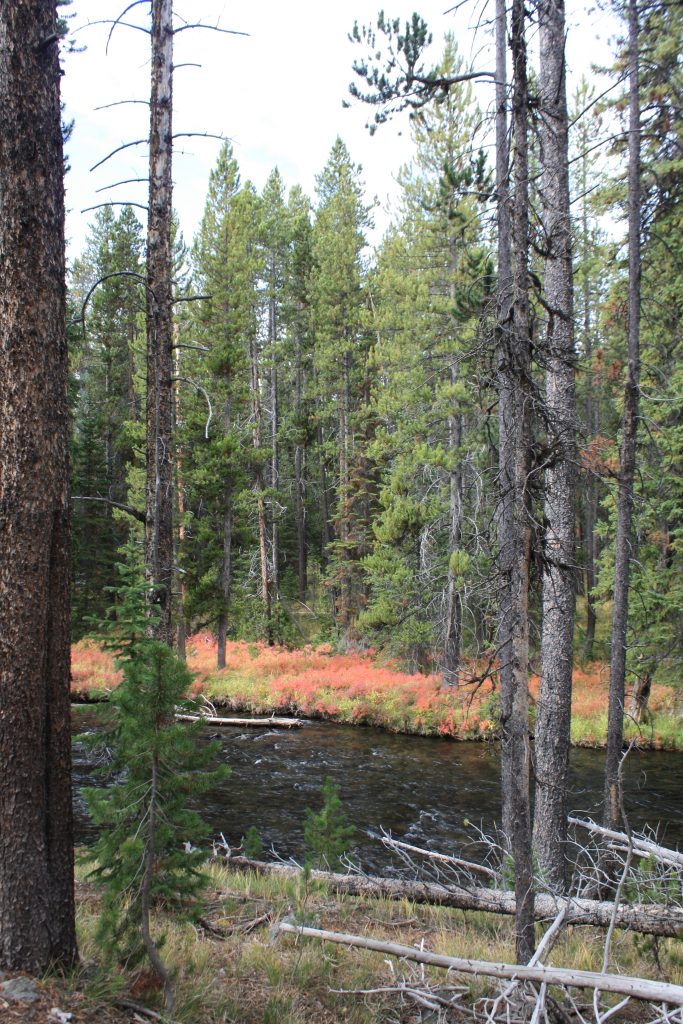
Arriving at Lone Star Geyser
Lone Star Geyser sits in a clearing at the very end of the trail. Runoff channels run down to the river and are covered in colorful bacterial mats. Fumaroles steam and hot springs bubble nearby. Logs and benches are scattered around the sinter where visitors can sit. There is plenty of room around the geyser to spread out, relax, enjoy a snack, and wait for the next eruption.
The cone-shaped geyser erupts every three hours and is pretty reliable in its timing. As it gears up for its next eruption, the geyser will begin to splash and splutter. Then the real show begins. Lone Star Geyser shoots water up to 45 feet in the air. Compared to some of its cousins up the road, this isn’t an enormous fountain of water. However, the duration of its eruption can be up to thirty minutes in length. Major eruptions conclude with a steam phase.
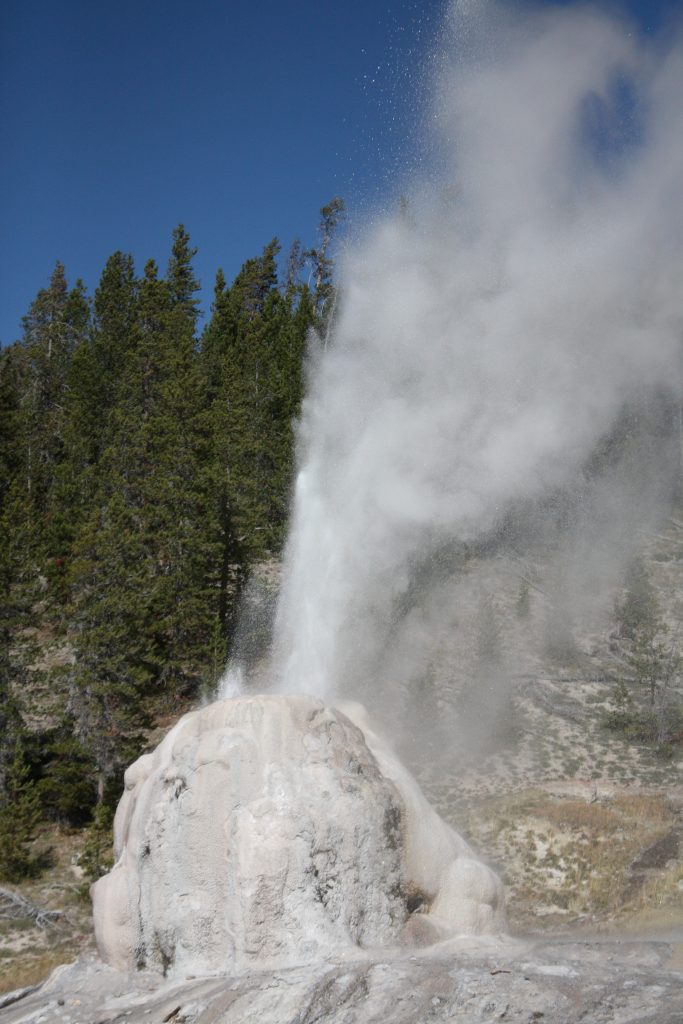
Copyright © 2021 Volcano Hopper. All rights reserved.

